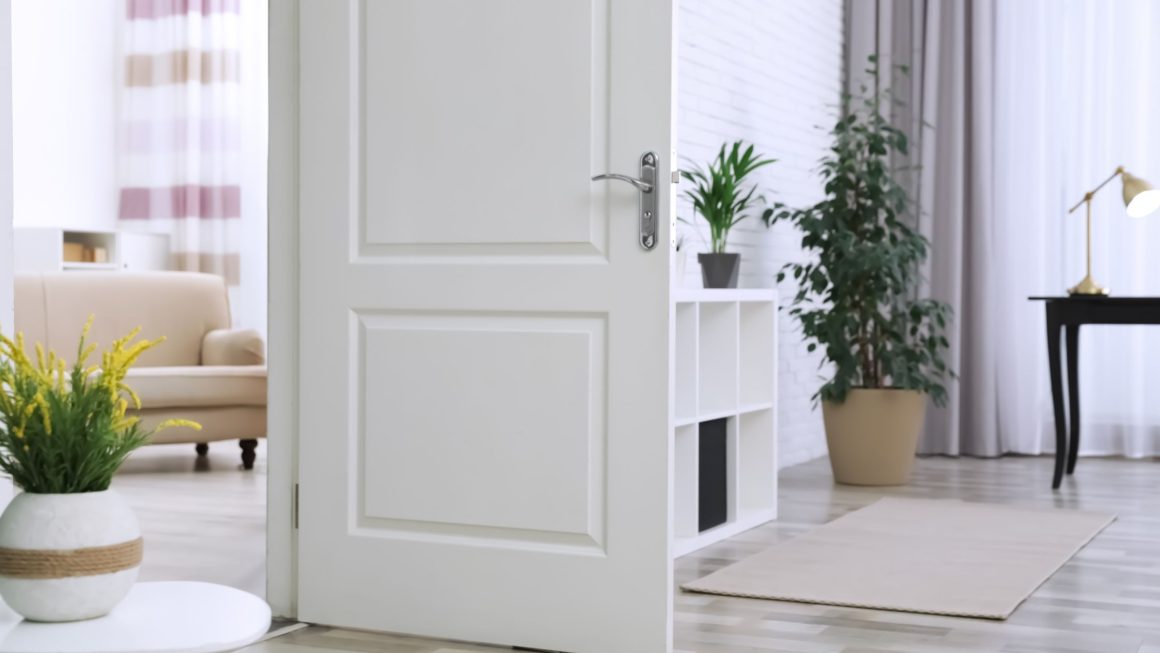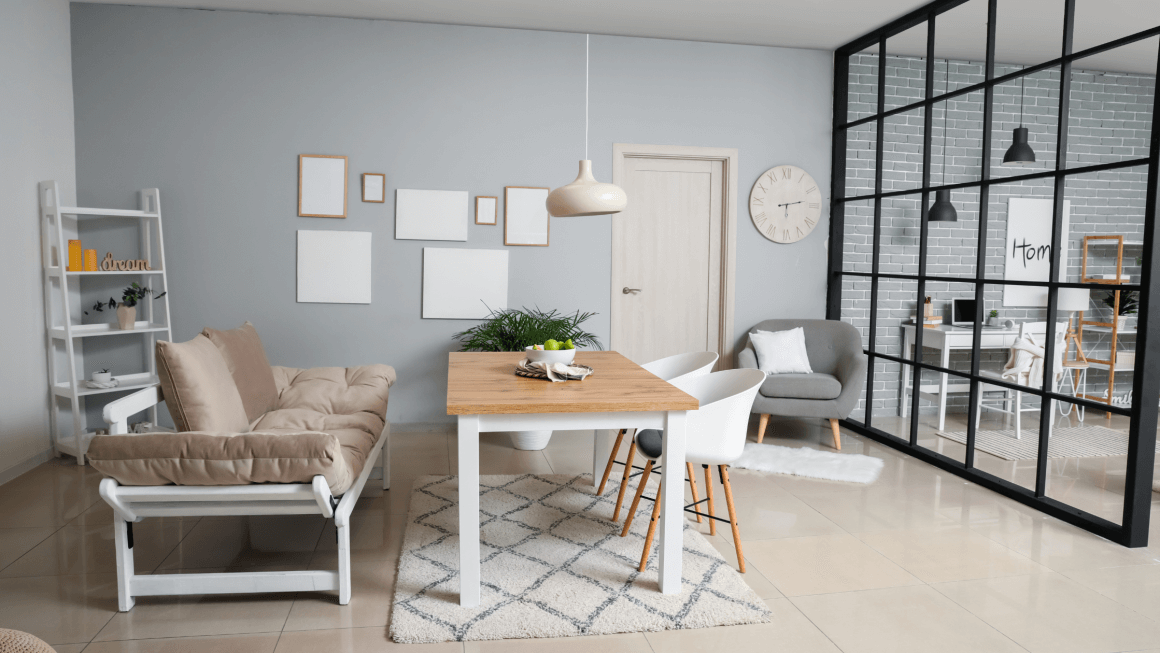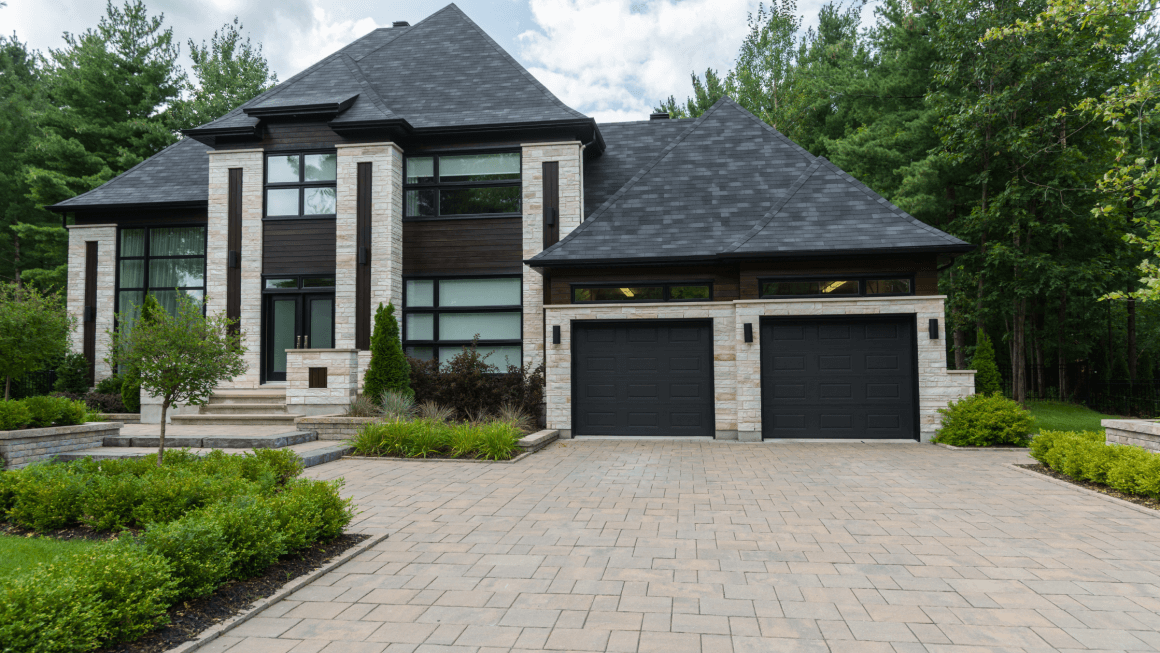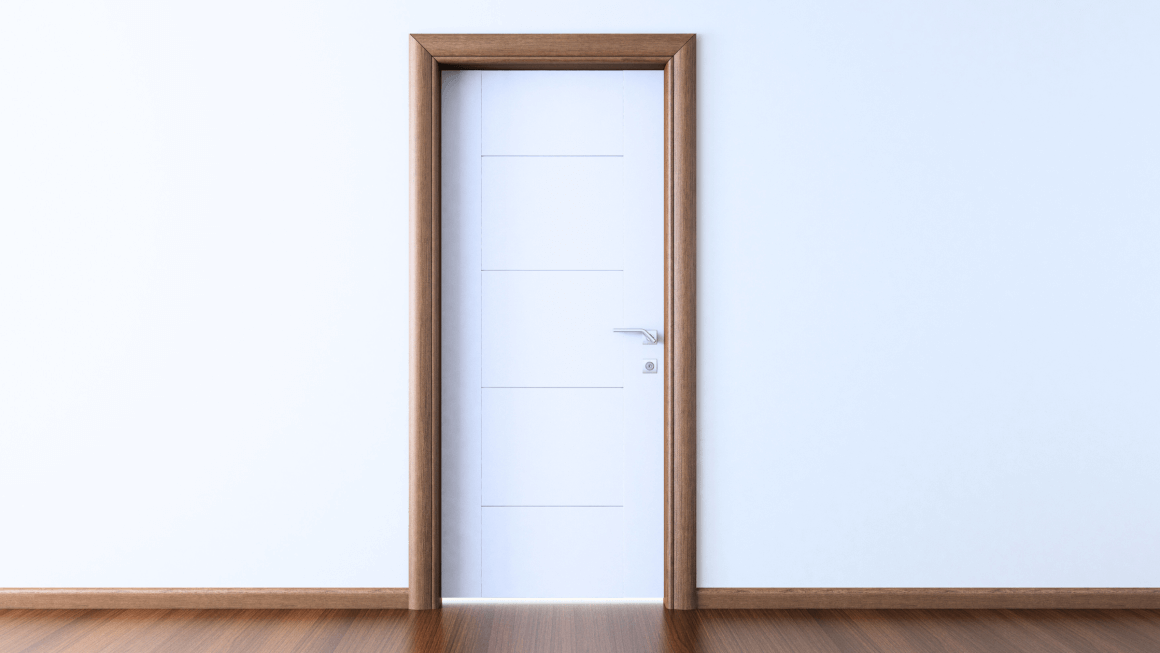Sticking doors can be super annoying. Luckily, most cases are simple to solve as there are a few ways to fix a sticking door, depending on the cause of the problem. Unpack the common sticky door fixes you can try yourself and find out why prehung door sets might be a potential solution.
Stop Doors Sticking Fast
Clean and Lubricate
Dirt and grime build up from around your house can cause friction so that the door unfortunately sticks. Clean the door and frame with soapy water, then apply a lubricant like WD-40 to the hinges.
Tighten the Hinge Screws
Loose hinges can cause the door to sag and rub against the frame. Tighten the screws on both sides of all the hinges with a screwdriver. Be careful not to over-tighten or strip the screws. Try to use a manual hand screwdriver rather than a drill – using a drill can sometimes strip the screw holes and make the problem worse.
Adjust the Strike Plate
The strike plate is the metal plate on the door jamb that the latch meets when the door closes. If the metal strike plate is misaligned, the door may not close properly and rub against the frame. Try loosening the screws on the strike plate and slightly shifting it to see if that helps.
Check For More Serious Issues
If you live in an older home or period property, it could be that the foundations may be subsiding. When foundations start to subside, this can affect many different parts of the house, including your doors and door frames.
Why Do my Interior Doors Keep Sticking?
Expansion and Contraction
Fluctuations in humidity levels can cause wooden doors to swell in humid weather and shrink in dry weather. This swelling can make the door rub against the frame, causing sticking.
Loose Hinges
Over time, screws in the hinges can loosen, causing the door to sag and rub against the frame.
Misaligned Strike Plate
The strike plate is the metal plate on the door jamb that the latch meets when the door closes. If it’s misaligned, the door may not close properly and rub against the frame.
Door Warp
Extreme temperatures or humidity swings can cause a door to warp over time. A warped door simply won’t fit the frame properly, leading to sticking.
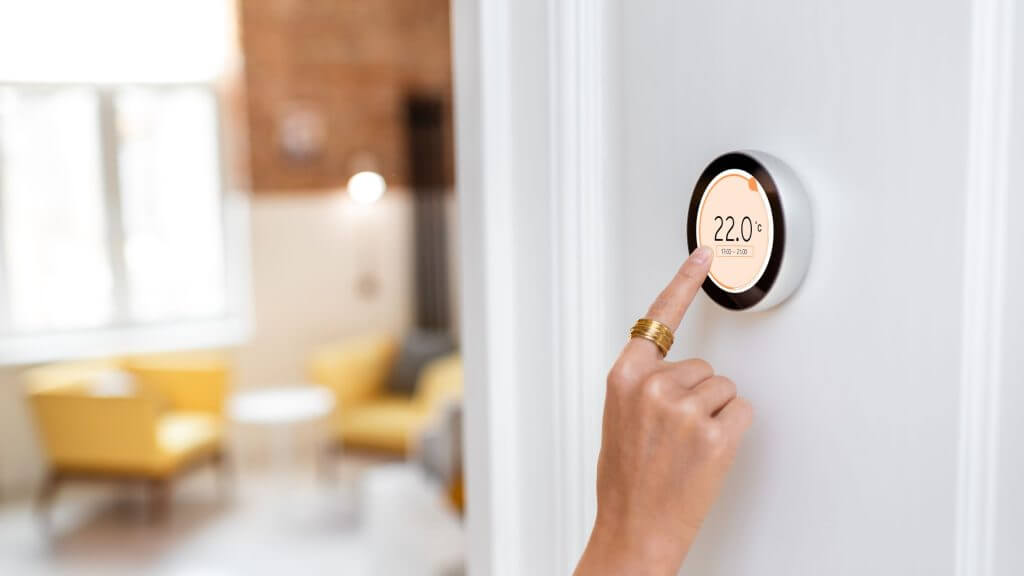
How Do You Stop a Swollen Door From Sticking?
A swollen door is a common cause behind sticky doors, especially during humid summer months. Here are some approaches to tackle this issue.
Air Conditioning and Central Heating
Having central heating on excessively can cause doors to warp. Running an air conditioner helps remove moisture from the air, which can shrink the door back to its normal size.
Dehumidifier
If you don’t have air conditioning consider using a dehumidifier in the room with the sticking door to draw out excess moisture.
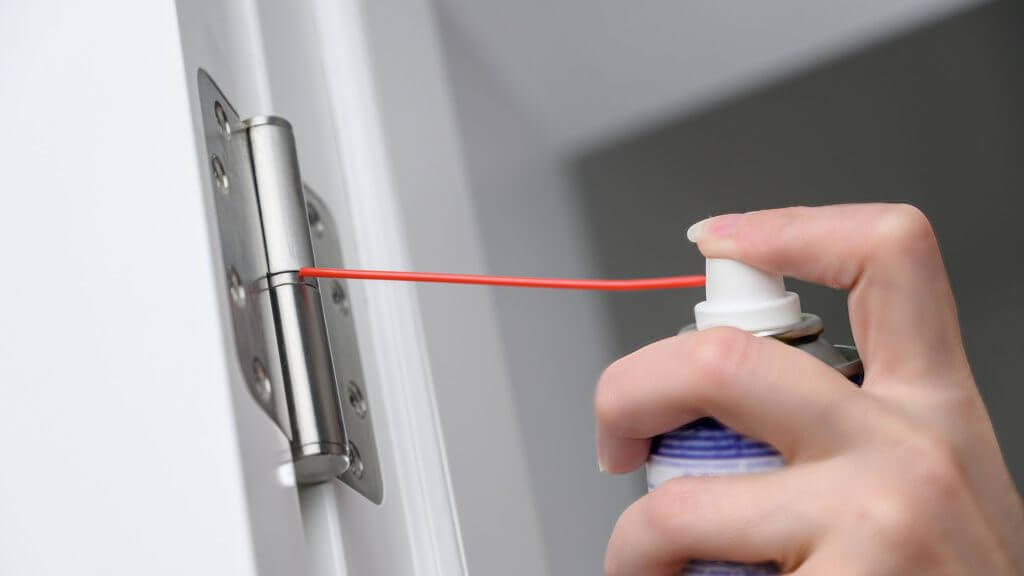
Light Lubrication (Temporary Fix)
In the short term, lubricate the areas where the door rubs against the frame. A light application of a lubricant like petroleum jelly or bar soap can reduce friction and allow the door to open and close more easily. However, this is a temporary solution and may need to be repeated as the door absorbs moisture again.
Bonus Tip
Adding oil to the hinges, such as olive or coconut oil, can also act as a helpful lubricant to reduce friction between door and frame, so it can close freely. If you’re using a cooking oil on the hinges, apply only a small amount, as it can attract dust and grime.
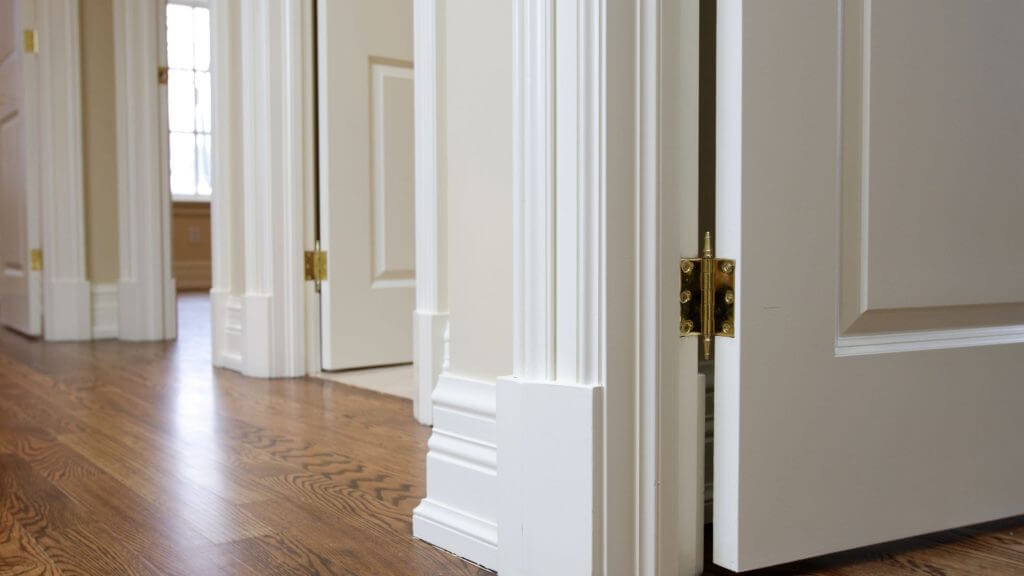
Addressing the Swelling (More Permanent Fix)
If the lubrication route isn’t ideal, address the swelling itself. This involves removing a small amount of material or excess wood from the swollen area of the door.
Take the door off the hinges and use a planer or belt sander to shave down the high spots. Be sure to remove the door stop (if present) before sanding or planing. Take safety precautions when using such tools and wear a dust mask and eye protection.
Identify sticking points
Before sanding or planing, identify exactly where the door is rubbing against the frame. Use a piece of paper to mark the sticking points as you open and close the door.
Start small
When removing material from the door, it’s important to start small and test frequently. You can always remove more material, but you can’t put it back on!
If you’re not comfortable using power tools, consult a professional joiner to help fix the swollen door.
How Do You Fix a Door That Rubs at the Bottom?
A door rubbing at the bottom can be frustrating, but it’s often a fixable problem.
Tighten Loose Hinges
This is the most common culprit. Loose screws in the hinges can cause the door to sag and rub at the bottom. Use a screwdriver to tighten all the screws on both sides of all the hinges. Be careful not to over-tighten or strip the screws.
Adjust the Hinges (For Minor Rubbing)
If tightening the screws doesn’t solve the problem, you can try slightly adjusting the hinges.
Rubbing on hinge side
If the door rubs at the bottom on the side with the top hinge, tighten the bottom hinge screw and loosen the top hinge screw slightly. This will tilt the door upwards a bit.
Rubbing on latch side
If the door rubs at the bottom on the side with the handle (latch side), loosen the bottom hinge screw and tighten the top hinge screw slightly. This will tilt the door away from the rubbing point.
Add Shims (For More Clearance)
If adjusting the hinges isn’t enough, add thin shims between the hinge and the door jamb to lift the door slightly. Cardboard, veneer strips, or even a thin metal shim can work.
Placement: Place the shim behind the hinge on the side where the door rubs (hinge side for bottom rub on hinge side, latch side for bottom rub on latch side).
Caution: Don’t add too many shims, as this can weaken the hinge attachment.
Sanding the Bottom (Last Resort)
If the door is significantly scraping, as a last resort, you can try very carefully sanding a small amount of wood from the bottom of the door. However, this is a permanent fix and should be done with caution to avoid removing too much material.
Before making any adjustments, open and close the door to see exactly where it rubs against the frame. Mark the spot with a pencil to help guide you. When making adjustments or removing material, take it slow and make small changes at a time. You can always make further adjustments or ask an expert for help if needed.
To protect your walls and floor it might be best to put in a door stopper. Find out how to install a door stop in this ultra handy article.
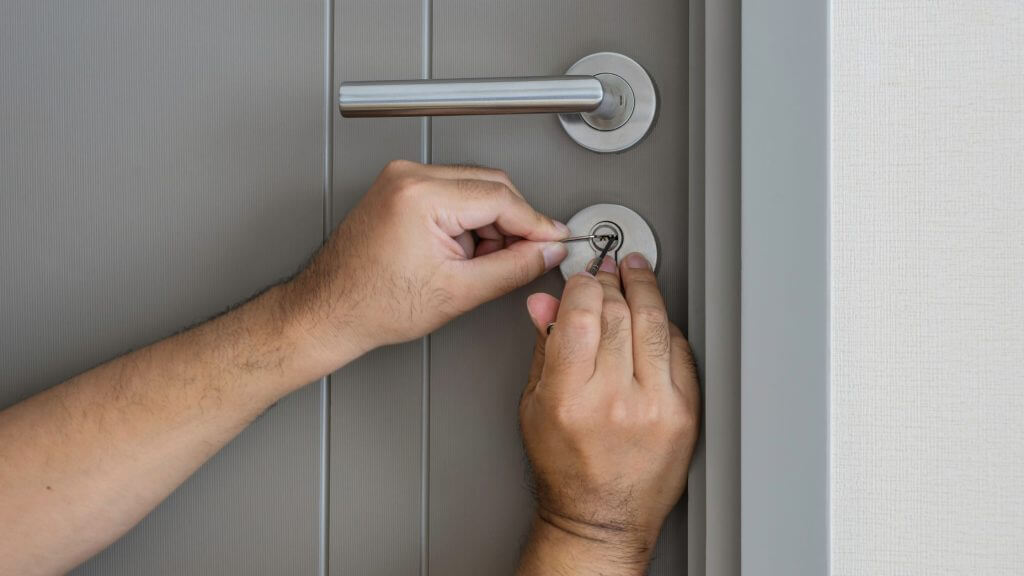
How Do I Fix a Door Stuck From The Inside?
Doorknob/Handle
First, try turning the doorknob or handle firmly in both directions. Sometimes a sticky latch or lock mechanism can be persuaded to open with a little extra force.
Look for Obstructions
Check if there are any objects behind the door preventing it from swinging open. This could be a piece of furniture, a box, or even a loose doorknob from the other side.
Jiggle the Knob
While applying light pressure on the door in the direction it should open, try jiggling the doorknob or handle back and forth. This can sometimes dislodge a stuck latch mechanism.
Credit Card Trick (For Lever Handles)
If you have a credit card (or a similar thin, sturdy card), you might be able to manipulate the latch mechanism.
Carefully insert the card between the door and the frame, around the latch area (usually near the handle). While applying gentle but firm pressure on the door in the opening direction, try sliding the card up and down, aiming to flex the latch and release the door.
Try These Methods If Quick Fixes Fail
Unscrew the Hinges (if possible)
If the door is severely stuck and the above methods fail, you can try removing the door from its hinges. However, this can be tricky from the inside and requires some caution.
Identify Hinges
Locate the hinges on the side of the door where the doorknob or handle is located. Most interior doors have two or three hinges.
Unscrew Carefully
Using a screwdriver (hopefully you have one inside the room!), try to remove the screws on the top hinge, one at a time. Be careful not to let the door fall on you. If possible, wedge something sturdy under the door to support its weight as you remove the screws.
Once Loose
Once the top hinge screws are loose, carefully tilt the door inwards and lift it up to remove it completely. Important: If you can’t remove the screws or safely remove the door on your own, stop and seek help.
If All Else Fails Call for Help
Exhausted all safe options and still stuck? It’s time to call for help. Contact a locksmith or a handyman who can assist you in opening the door and diagnosing the sticking problem.
Throughout this process, prioritise your safety. Avoid using excessive force or damaging the door or frame. If you’re unsure about any step, exercise caution and request assistance.
Learn about different types of locks, find out how to change a lock on a uPVC door (and how much locksmiths charge) and get to grips with how to change a door handle with our dedicated guides.
Refreshing Your Sticking Doors
If you’ve got carried away with this DIY task you may need to repaint your door frame, neaten up the door edge or give the whole area a fresh coat of paint. Just to keep things looking pristine. Whether you need to paint or sand a door after fixing a sticking door really depends on the repair method used and the condition of the door itself.
If the fix involved lubrication or minor adjustments then no sanding or painting is needed.
In most cases, if you simply lubricated the hinges or made minor adjustments to the strike plate or hinges, you shouldn’t need to sand or paint the door.
If the fix involved sanding the door, then you’ll need to sand for smoothing purposes.
If you sanded a small area to address rubbing caused by swelling, you might want to do some light sanding with fine-grit sandpaper (around 120 grit or higher) to smooth the sanded area. This will create a more even finish.
If the sanded area is noticeable or the door’s paint is already chipped or scuffed, you can repaint the entire door or just the sanded area. For spot-painting, use a matching paint colour and apply light coats to blend seamlessly.
Learn how to paint door frames to achieve a flawless finish using tips from our guide.
Additional Door Maintenance Factors To Consider
Door condition
If the door has significant scratches, dents, or peeling paint beyond the sticking repair area, then sanding and painting the entire door might be a good idea for a complete refresh.
Desired finish
If you’re happy with the current look of the door and just want to address the sticking issue, then sanding and painting might not be necessary.
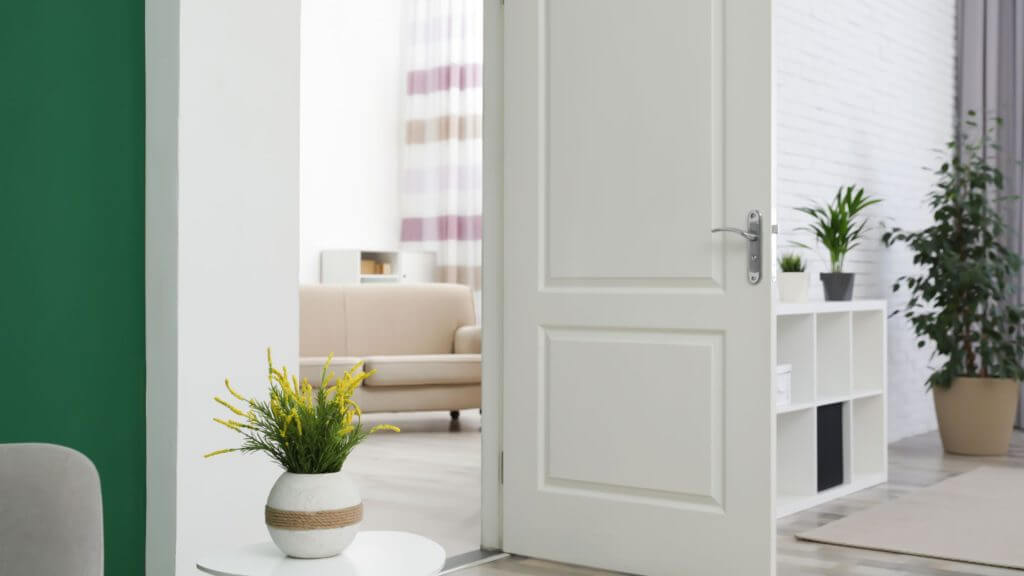
Avoiding Sticking With Prehung Doors
Prehung doors can be helpful in reducing the chance of encountering sticking doors, but they aren’t a guaranteed solution. Prehung door sets are essentially complete door units that come ready to be installed. They consist of three main parts:
Door Slab
This is the actual door itself, the solid piece that swings open and closed. Pre-hung doors come in various materials like wood, fiberglass, or metal, with different styles and designs to choose from.
Door Frame
The frame is the surrounding structure that the door swings on. It includes the jambs (vertical sides) and the header (top piece) that hold the door slab in place. In a pre-hung door, the frame comes already attached to the door slab.
Hinges
Do prehung doors come with hinges? Yes. The hinges are the hardware that allows the door to swing open and closed.
They’re pre-installed on the door jamb and the door slab in a pre-hung unit. Some pre-hung doors may also come with pre-drilled holes for the door handle and strike plate (the metal plate on the frame that the latch meets when closed).

Are Prehung Doors Worth it?
Convenience
Since they come pre-assembled, pre-hung doors are much faster and easier to install compared to slab doors (doors sold without frames or hinges). This is especially helpful for DIY projects or if you need to replace multiple doors.
Precise Assembly
Pre-hung doors come with the frame and hinges already installed and aligned at the factory. This reduces the chance of misalignment issues that can cause sticking during installation.
Quality Control
Most pre-hung doors from reputable manufacturers go through quality control checks to ensure proper fit and clearances.

Creating The Look You Want with Expert Advice
The best defence against a sticky door can sometimes be to purchase high quality interior doors in the first place. Discover our selection of prehung doors and lessen the chance of sticking doors in your home. Plus, find out how to fix common door problems in our more in depth blog post. Need further advice? Contact our team. We’re on standby to help.



